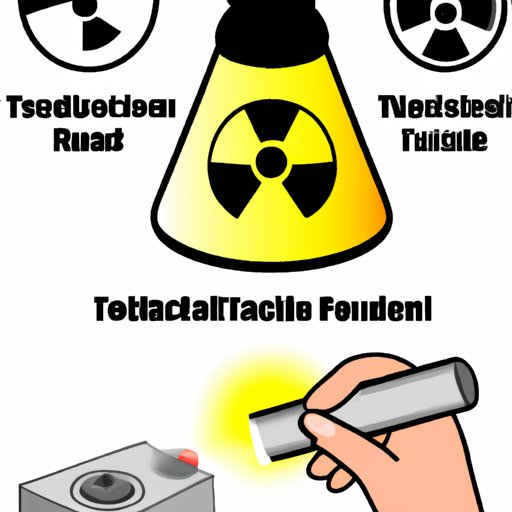
Introduction
A nuclear stress test, also known as myocardial perfusion imaging or nuclear scintigraphy, is a medical imaging procedure that helps determine how well blood flows to the heart. But, what happens once the test has been completed? Are patients still radioactive, and for how long? This article is intended for patients looking to understand the duration of radioactivity after a nuclear stress test, and what they can do to reduce any risks or exposure.
What is a Nuclear Stress Test?
A nuclear stress test is a medical imaging procedure used to assess how well blood flows to the heart during exercise or rest. Patients are injected with a small amount of radioactive material called a tracer, which allows doctors to view detailed images of the heart using a special camera. This test is usually done on individuals who are experiencing chest pain, shortness of breath, or other symptoms of heart disease.
How does a Nuclear Stress Test work?
During a nuclear stress test, patients are injected with a radioactive isotope, usually thallium or technetium, which is absorbed by the heart muscle. The tracer is then detected by the special camera, which captures images of the heart at rest, and then again after exercise. These images show areas of the heart that are receiving poor blood flow, indicating potential blockages in the coronary arteries.
Duration of Radioactivity after a Nuclear Stress Test: What you need to know
Many patients wonder how long they will be radioactive after a nuclear stress test. The good news is that the amount of radiation used in this test is minimal and generally not harmful to most people. The small amount of radiation in the body will decay over time, which means that the radioactivity will decrease naturally. The duration of radioactivity is measured in half-life, which is the time it takes for half of the radioactive material to decay.
Nuclear Stress Test: How long does Radioactivity Last in the Body?
The amount of radiation in the body after a nuclear stress test varies depending on the type of tracer used, the patient’s body weight, age, and metabolism. However, the average length of radioactivity is typically around 24 to 48 hours. During this time, patients should avoid close contact with infants, young children, pregnant women, and people with weakened immune systems. It is also important to note that radiation exposure from one nuclear stress test is equivalent to a few years of background radiation, which is the naturally occurring radiation we are exposed to every day.
Clearing up the Confusion: Understanding the Duration of Radioactivity after a Nuclear Stress Test
There is a lot of misinformation and confusion surrounding radioactivity after a nuclear stress test. Some patients may worry that they will set off metal detectors, or that they should avoid large crowds or public transportation. However, the reality is that the amount of radiation in the body is so minimal that it poses no significant risk to the patient or those around them.
Managing Radioactivity after a Nuclear Stress Test: Tips for Patients
To reduce any risks or exposure to radioactivity after a nuclear stress test, patients must follow a few simple steps. Healthcare providers will provide patients with specific instructions on what to do, but general advice includes:
– Drink plenty of water to help flush the tracer out of the body
– Avoid close contact with infants, young children, pregnant women, or anyone with a weakened immune system
– Practice good hygiene, including washing hands regularly and wiping down surfaces that may have come into contact with bodily fluids
– Avoid unnecessary radiation exposure, such as x-rays or CT scans, for a few days following the test.
The Science behind Radioactivity after a Nuclear Stress Test and What to Expect
While radiation exposure from a nuclear stress test is generally not harmful to most people, it is still essential to understand the science behind it and what patients can expect during and after the test. It is important to note that different tracers have different decay rates, and the duration of radioactivity may vary for each patient. Patients may experience mild side effects from the tracer, such as a metallic taste in the mouth or flushing of the skin. These should subside within a few hours. If patients experience any severe side effects, they should contact their healthcare provider immediately.
Conclusion
Undergoing a nuclear stress test can be a source of anxiety for many patients, but understanding the duration of radioactivity and what steps to take to manage exposure can help ease concerns. While radioactivity from a nuclear stress test lasts around 24 to 48 hours, it poses no significant risks to the patient or those around them. By following guidelines and healthcare provider instructions, patients can ensure a safe and effective nuclear stress test and peace of mind regarding their exposure to radioactivity.




